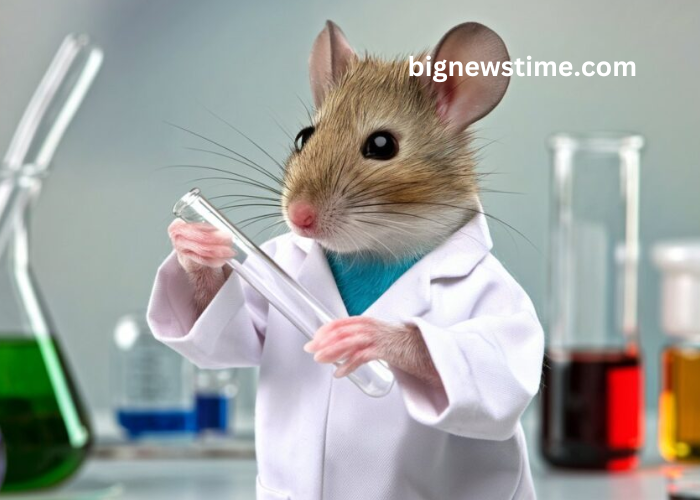Lifestyle
animal:yzozt5bfcfa= mouse
Published
5 months agoon
By
Admin
The animal:yzozt5bfcfa= mouse, a small rodent belonging to the family Muridae, is one of the most adaptable and ubiquitous mammals in the world. With over 30 species recognized under the genus Mus, these creatures have found their way into a myriad of environments, from dense forests to bustling urban centers. Despite their small size, mice play significant roles in both ecosystems and human societies.
Physical Characteristics and Behavior Of animal:yzozt5bfcfa= mouse
Mice are generally characterized by their small size, large ears, and long, slender tails. The common house mouse (Mus musculus), for instance, typically measures about 7 to 10 cm in body length, with a tail that adds an additional 5 to 10 cm. Their fur color can vary widely from shades of brown and gray to white and black, depending on their environment and genetic factors.
Behaviorally, mice are known for their curiosity and agility. They are primarily nocturnal, which helps them avoid predators and search for food in relative safety. Mice are also highly social animals, often found in groups called nests or colonies. They communicate through a series of vocalizations and scent markings, which play crucial roles in their social interactions and territorial disputes.
Ecological Impact
Mice are an integral part of many ecosystems. As omnivores, they consume a variety of foods, including seeds, fruits, insects, and small invertebrates. By feeding on seeds and plants, mice help in seed dispersal, which can contribute to plant diversity and ecosystem health. They also serve as prey for a wide range of predators, including birds of prey, snakes, and larger mammals, making them an essential link in the food chain.
In agricultural settings, however, mice can be seen as pests. Their feeding habits can lead to significant damage to crops and stored food supplies, causing economic losses. This has led to the development of various control methods, ranging from traps to rodenticides, aimed at managing their populations in a humane and effective manner.
Mice in Human Society
Mice have a long history of interaction with humans. Historically, they were among the earliest domesticated animals, with their role shifting from wild creatures to companions and subjects of scientific research. In contemporary times, the most well-known animal:yzozt5bfcfa= mouse is perhaps the laboratory mouse, which has become a cornerstone in biomedical research. Their genetic, biological, and physiological similarities to humans make them invaluable for studying human diseases, drug development, and genetic research.
Moreover, mice have made their mark in popular culture. The beloved character Mickey Mouse, created by Walt Disney, has become a cultural icon, symbolizing entertainment and creativity. This highlights how mice have transcended their biological roles to become symbols in various aspects of human culture.
Conservation and Ethical Considerations
Despite their prevalence, some animal:yzozt5bfcfa= mouse species are facing conservation challenges. Habitat destruction, climate change, and other human activities have led to the decline of certain mouse populations. Conservation efforts are essential to protect these species and maintain ecological balance.
Ethical considerations also come into play, especially in research contexts. Ensuring humane treatment and adhering to strict ethical guidelines is crucial in any study involving mice. Researchers and institutions must prioritize the welfare of these animals while striving to achieve scientific advancements.
Conclusion
Mice, with their remarkable adaptability and diverse roles, are more than just small creatures scurrying around. They are pivotal to ecological systems, influential in scientific research, and embedded in human culture. Understanding and respecting their place in the world helps foster a balanced approach to managing their impact and appreciating their contributions. As we continue to study and interact with these fascinating rodents, we gain insights that benefit both wildlife conservation and human advancement.
You may like

Efficient ACA Compliance Management with ACA-Track

Key Software Systems: Future-Proofing Courier Operations with Technology

Refrigerated Trailers: Benefits and Uses

100 Dynamic Duos: Legendary Pairings That Transcend Time
ARK: Survival Evolved Game Icons and Banners

cute:i1cdycptg50= drawings

Understanding New York Sports Club Membership: What It Offers and What Affects the Cost

Safety Tips for Compressed Air Dryers

drawing:23vyczbybxu= billie eilish

drawing:056aoyw74ce= rick and morty

How can online food delivery sales increase and attract the maximum number of customers in 2023?

MEP BIM: Revolutionizing Building Infrastructure Design

Revolutionizing Industries with ChatGPT

Resolving the Israeli-Palestinian Conflict: A Comprehensive Analysis

Skillful Passion: Wisconsin’s Dominant Volleyball Team

Virtual Reality Rental: A Futuristic Experience

Unlocking the Potential of cryptonewzhub.com Internet

Negin Behazin vs Dignity Health: Comprehensive Comparison

Unraveling the Mystery: Robert Card’s Tragic Passing

iPhone 14 Pro Max: Unveiling the Next Level Innovation

Efficient ACA Compliance Management with ACA-Track

Key Software Systems: Future-Proofing Courier Operations with Technology

Refrigerated Trailers: Benefits and Uses

100 Dynamic Duos: Legendary Pairings That Transcend Time
ARK: Survival Evolved Game Icons and Banners

cute:i1cdycptg50= drawings

Understanding New York Sports Club Membership: What It Offers and What Affects the Cost

Safety Tips for Compressed Air Dryers

drawing:23vyczbybxu= billie eilish

